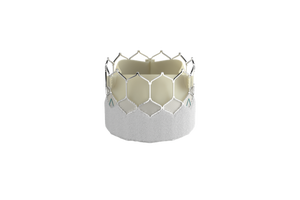Developers Take Pains to Develop Spinal Implant
May 11, 2009
Originally Published MPMN May 2009
ENGINEERING SOLUTIONS: MDEA
Developers Take Pains to Develop Spinal Implant
|
InterFuse can be implanted less invasively than devices requiring abdominal incisions. |
Millions of Americans suffer from back problems, prompting the healthcare industry to pump large sums of money and vast resources into therapies and treatments each year. In 2005, for example, $86 billion was spent on treating back problems, up 65% from 1997. In the same period, $24 billion was spent for in-patient treatment of back ailments, including surgeries. Thus, when Vertebral Technologies Inc. (Minnetonka, MN; www.vti-spine.com) decided to develop an interbody fusion device for the spine that relieves pain while providing a customized fit for the patient, it knew it was tapping into something big.
Used to relieve back pain after other therapies have failed, InterFuse fuses two vertebral bodies together. “The device provides support and stability at the intervertebral disk space,” says Mark Rydell, design engineer at Vertebral Technologies. “It also allows for fusion across the disk space through fenestrated areas in the implant that are filled with autologous bone.” Because the device can be inserted via a 9-mm posterior annulotomy—an incision through the strong outer ring of fibers surrounding the spinal disks—its implantation is less invasive than surgery requiring an abdominal incision.
Designing and fabricating the implant entailed collaboration between Vertebral Technologies and a group of materials and service providers, including Invibio Inc. (Woodbury, MN; www.invibio.com), a vendor of medical-grade and implantable biomaterials. “We chose Invibio because it was the only company at the time that made an implantable grade of PEEK,” Rydell states. “Their product is used in other fusion devices and is known by the FDA.”
Invibio had been working with Vertebral Technologies since its inception on implantable devices, states David Hawks, Invibio’s business development manager. “For the InterFuse device, we provided a biomaterial that is mapped to the specific needs of this minimally invasive spinal device, considering mechanical performance, the device’s design requirements, and the delivery approach.” Its PEEK Optima enabled the development of a segmented device with properties that could be achieved through injection molding.
After material selection, Vertebral Technologies generated a device design and then turned to Minnesota Rubber and Plastics (Minneapolis; ww.mnrubber.com), a molder and assembler of elastomer and thermoplastic products. The vendor molded the implant into a near net shape and coordinated the manufacture of the initial machined prototypes.
Prior to manufacturing, Minnesota Rubber performed mold-flow analysis, material molding characteristics, tool design, and other engineering steps, according to Jim Beyer, the company’s technical sales representative. After mold validation, adjustments were made to provide a robust, capable, and repeatable process. The dilemma, he explains, was to design and build tooling for injection-molded plastic components that would enable the OEM to invest as little money as possible while minimizing postmold machining operations.
Minnesota Rubber decided that for the initial iteration, the most cost-effective approach was to concentrate all the smaller and larger part designs into the three largest basic molded components, or blanks, minimizing the amount of PEEK Optima that would have to be removed during machining.
Implant-grade PEEK Optima can cost significantly more than titanium and other standard implant materials, remarks James Evans, president and general manager of Rochester Medical Implants (Rochester, IN; www.rmi.us.com). Thus, the company’s task was to devise a cost-effective means of handling the InterFuse blanks made by Minnesota Rubber and milling them to the final specifications.
The 16 different InterFuse part sizes consist of three component types each. With 48 assemblies to machine, Rochester had to develop a flexible programming scheme to accommodate quick changeovers for small product runs. Thus, it developed three generations of custom fixturing, each of which was achieved using a formal Kaizen methodology that enabled continuous improvement from generation to generation. Based on this approach, the company has developed a five-axis process that enables it to mill up to 30 InterFuse segments in one machine cycle using a single CNC vertical milling machine.
Rochester helped decide which features should be machined and which should be molded, and it developed a system for machining 48 different segment shapes.
Copyright ©2009 Medical Product Manufacturing News
You May Also Like


.png?width=300&auto=webp&quality=80&disable=upscale)
